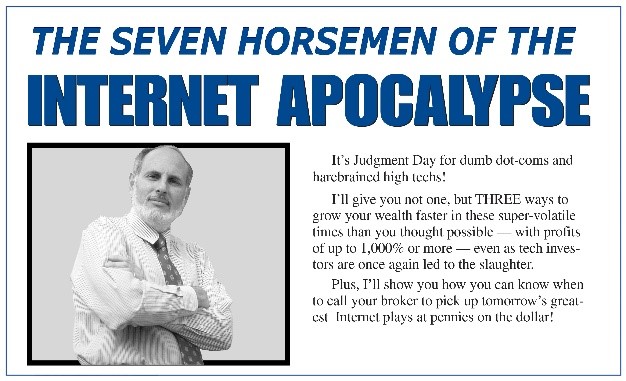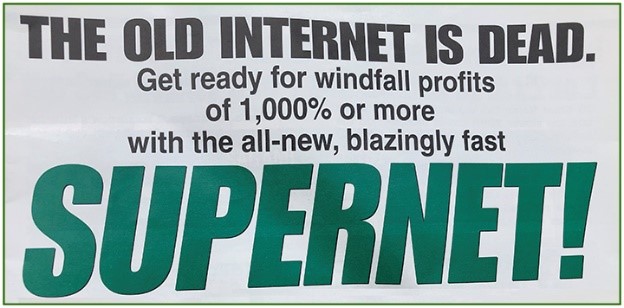Economy Going Crazy. Washington Deadlocked. Tech Stocks Surging …
 |
U.S. consumer spending, which accounts of two-thirds of the economy, plunged at an annual rate of 34.6% in the second quarter.
It was, by far, the worst in history.
U.S. auto sales are also sinking, headed to levels not seen since the 1970s.
Over 40 million Americans have been thrown out of work; many will soon be thrown out of their homes.
And despite all this, Congress still can’t figure out what the heck to do about it.
Yesterday, White House Chief of Staff Mark Meadows confessed he’s “not optimistic” that a coronavirus relief deal will be reached in the near future.
And this morning, the press is reporting that, if no deal can be reached, the Trump administration will consider unilateral action, where their options are very limited.
Meanwhile, regardless of what happens in Washington, earnings at companies like Alphabet (Nasdaq: GOOGL, Rated “B-”), Amazon (Nasdaq: AMZN, Rated “B”), Apple (Nasdaq: AAPL, Rated “B”) and Facebook (Nasdaq: FB, Rated “B-”) are growing like gangbusters.
What explains the disconnect? It’s all part and parcel of a brand new phenomenon that has burst onto the scene with gale force …
Future Shock 2020
The original concept of “Future Shock,” as described by author Alvin Toffler 50 years ago, was rapid change that shocks society.
Now, Weiss Ratings, which also began about 50 years ago, has completed a major study that demonstrates Future Shock 2020 will be even bigger — a massive economic disruption happening worldwide, all at once.
At the same time, it’s also one of the biggest investment opportunities of the next two years.
Indeed, Future Shock 2020 is a sudden bifurcation — a massive split between two entirely different worlds moving though time in opposite directions:
- The traditional brick-and-mortar economy, which is in shambles, and
- The modern digital world which is soaring.
The shock waves will continue for many years to come. But based on everything we know — and everything that’s known by the U.S. Congressional Budget Office, the World Bank and IMF — the most intense time period will be the next 24 months.
Look. Weiss Ratings didn’t begin studying tech stocks yesterday.
 |
In fact, in late 1999, just as Internet stocks were reaching a bubble peak and Wall Street firms were touting them unanimously, we issued a landmark report headlined “The Seven Horsemen of the Internet Apocalypse.”
The report predicted a historic crash in dot-com stocks.
Why? Because not a single stock on the tech-heavy Nasdaq merited a Weiss Rating of “buy.” Nearly every one was a “sell.”
Sure enough, about two months later, the tech-stock crash began, and by 2003, investors had seen their stocks fall three-quarters in value. (On average, that is. Many investors lost even more.)
Then, just when Wall Street had soured on Internet stocks and tech investors had run for the hills …
 |
We issued our next major report, with the headline, “The old Internet is dead. Get ready for windfall profits of 1,000% or more with the all-new, blazingly fast SUPERNET.”
You might think that was promising too much. But as it turned out, we underestimated the true profit potential that was possible over time.
Indeed, after the Dot-Com bust of the early 2000s, Weiss Ratings issued “buy” ratings on a series of tech stocks that have since generated total returns that are greater than 1,000%.
Here are just a few examples — along with the returns that investors could have made through today, simply by following the Weiss Ratings for each:
Fair Isaac Corporation — 1,230%
Amphenol Corporation — 1,245%
Ansys Inc — 2,836%
Tyler Technologies — 3,450%
Global Payments — 1,332%
IEH — 6,400%
Intuit — 1,424%
Manhattan Associates — 1,285%
Lam Research — 1,580% plus …
Apple — 15,621%.
On all these examples we issued the “buy” in 2004 and then never issued a sell. So investors following our ratings should be reaping every penny of the returns until this very day (including dividends, minus broker commissions and any taxes).
For the full story — and how you can start going for similar returns with relative safety — I suggest you watch our just-released 3-part video series here.
Or, if you prefer, you can read our e-book here.
Good luck and God bless!
Martin

